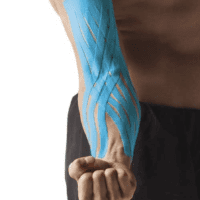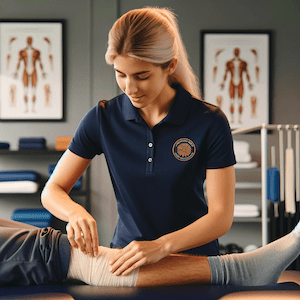Biomechanical Analysis
Article by John Miller

Biomechanical Analysis: A Physiotherapist’s Guide
Introduction
Biomechanical analysis plays a vital role in understanding human motion, especially in preventing and treating injuries. Both elite athletes and active individuals can benefit from a thorough biomechanical assessment. This article, from a physiotherapist’s viewpoint, will guide you through the importance of biomechanical analysis and how it can help in injury prevention and performance enhancement.
What is Biomechanical Analysis?
Biomechanical analysis is a scientific method used to study human movement. It involves various techniques like gait analysis, running analysis, and motion capture. These methods help physiotherapists identify biomechanical faults that could lead to injury or hinder performance.
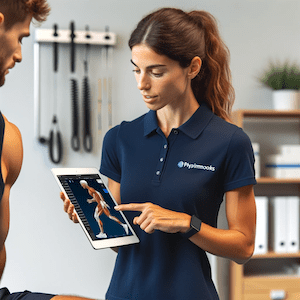
Benefits for Athletes and Active Individuals
Whether you’re an aspiring athlete or someone who enjoys a healthy, active lifestyle, understanding your body’s mechanics is crucial. Biomechanical analysis offers insights into how you move, highlighting areas of strength and identifying potential risks.
Latest Research and Developments
Recent studies highlight the importance of individualised biomechanical assessments. Advances in technology, such as 3D motion capture, provide more accurate and detailed analysis, leading to targeted treatment plans.
Gait Analysis in Detail
Gait analysis involves studying your walking pattern. It’s essential in identifying issues like asymmetry in stride or imbalance in weight distribution, which could lead to injuries over time.
Read more: Gait Analysis
Running Analysis for Performance
Running analysis focuses on your running style. It helps in enhancing performance and reducing the risk of injuries by correcting improper techniques.
Read more: Running Analysis
Workplace Biomechanics
Workplace biomechanics is another crucial area. It examines how your body copes with your work activities, offering insights into preventing workplace-related musculoskeletal disorders.
Read more: Workplace Analysis
When to Seek a Physiotherapist’s Advice
If you’re experiencing discomfort during physical activities or wish to improve your performance, consulting a physiotherapist for a biomechanical assessment is advisable. They can provide a personalised plan to address any identified issues.
Conclusion: The Importance of Biomechanical Analysis
Biomechanical analysis is not just for athletes; it’s beneficial for anyone looking to understand their body better and improve their physical wellbeing.
What to Do?
If you’re interested in a biomechanical analysis or have any concerns about your movement or performance, don’t hesitate to contact your nearest PhysioWorks clinic.
Common Muscle Injuries
A Physiotherapist's Guide
Introduction
Muscle injuries, presenting as muscle strain, pain or myalgia, are prevalent health issues affecting a wide range of individuals. This detailed guide, from a physiotherapist's perspective, delves into various muscle injuries, elaborating on their management, prevention, and the importance of professional advice. Explore the linked articles for an in-depth understanding of muscle injuries and their effective treatment.
Neck & Back Muscle Injuries: Causes and Solutions
- Back Muscle Pain: This pain often results from prolonged poor posture or physical overuse. Key to relief is engaging in exercises that strengthen the core muscles and improve posture, thereby alleviating the strain on the back.
- Neck Sprain: Caused by sudden, awkward movements, a neck sprain can benefit from a combination of gentle stretches and targeted strengthening exercises to restore flexibility and strength.
- Text Neck: A modern ailment resulting from extended mobile device use, text neck can lead to chronic pain. Regular breaks, posture-awareness, and neck-strengthening exercises are essential for prevention.
- Whiplash: Commonly occurring in car accidents, whiplash requires a careful approach including neck stabilisation exercises and controlled movement to encourage healing and prevent further injury.
Lower Limb Muscle Injuries: Understanding and Treating
- Hamstring Strain: Particularly common among athletes, particularly runners, this strain demands rest initially, followed by a carefully structured rehabilitation program focusing on gradual strength building and flexibility.
- Thigh Strain: Often seen in sports involving sprinting and jumping, thigh strains need a combination of rest, ice, compression, and elevation (RICE) in the initial stages, followed by carefully planned strengthening exercises.
- Groin Strain: This injury requires a nuanced approach, including sufficient rest and targeted exercises, to ensure a safe and effective recovery.
- Calf Muscle Tear: Key to recovery is a balance of rest, gentle stretching exercises, and a gradual return to full activity, ensuring the muscle heals correctly and strength is regained.
Upper Limb Muscle Injuries: Prevention and Care
- Golfer's Elbow and Tennis Elbow: Both these conditions involve inflammation of the tendons and require a rest period, followed by ice therapy and specific exercises tailored to strengthen the affected muscles.
- Corked Thigh: Resulting from direct impacts, these injuries demand immediate application of ice and a controlled, gradual exercise regime for recovery.
- DOMS, Fatigue-Related Cramps & Myalgia: Adequate rest, good hydration, and gentle stretching are crucial in alleviating these conditions.
- RSI: Regular stretching, ergonomic workplace adjustments, and taking breaks are key preventive measures for repetitive strain injury.
Systemic Causes of Muscle Pain: A Holistic View
- Fibromyalgia: This complex condition demands a holistic treatment approach, including exercise routines, stress management techniques, and sometimes medication.
- Rheumatoid Arthritis: Effective management combines medication, gentle exercise, and regular physiotherapy sessions.
Prevention and Management Strategies
- Regular Exercise: Regular physical activity helps maintain muscle strength and flexibility, reducing the risk of muscle injuries.
- Posture Improvement: Good posture, both in motion and at rest, is crucial for preventing muscle strain.
- Proper Warm-up and Cool-down: Adequate warm-up before and cool-down after physical activity is vital in preventing muscle strains and injuries.
- Ergonomic Adjustments: Making ergonomic adjustments at work and during daily activities can significantly reduce the risk of repetitive strain injuries and other muscle-related issues.
- Maintaining a Healthy Weight: Keeping a healthy weight reduces the strain on muscles, particularly in weight-bearing joints.
What to Do? Seeking Professional Advice
Consult a physiotherapist or doctor for personalised advice and treatment plans. Remember, early intervention can significantly improve recovery outcomes and prevent chronic problems.
Conclusion
While muscle injuries are common, effective management and prevention are achievable with the right approach and knowledge. Understanding the causes, symptoms, and various treatments available empowers individuals to take proactive steps in their recovery and prevention. For the most tailored and effective treatment, always seek the guidance of a professional physiotherapist.
Common Muscle Injury FAQs
Managing and Recovering from Muscle Injuries
Welcome to our Muscle Injury FAQs. It's your comprehensive guide for understanding, treating, and bouncing back from muscle injuries.
We'll discuss the different muscle injury types, grasp the concept of muscle trigger points, and discover the reasons behind muscular pain post-exercise. Learn about effective treatments to speed up recovery, and explore the benefits of stretching exercises and foam rollers. Embrace the therapeutic effects of various massage therapies including remedial, relaxation, trigger point, acupressure, and sports massages. Gear up to play an active part in your journey towards recovery from muscle injuries.
For more detailed information simple the question hyperlinks below.
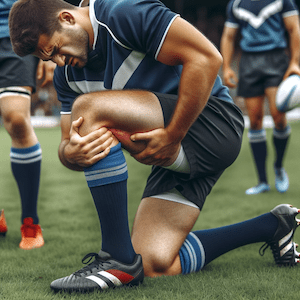

Diagnosing Muscle Injuries
- How Do You Know If It’s A Muscle Injury? - Understand how to identify a muscle injury, distinguishing it from other types of pain.
- What are the 4 Types of Muscle Injuries? - Explore the four main categories of muscle injuries, including strains and tears.
- What are the Most Common Muscle Injuries? - Learn about the most frequently occurring muscle injuries and how they affect your body.
- What is a Trigger Point in a Muscle? - Discover what trigger points are and their role in muscle pain.
- What Causes Post-Exercise Muscular Pain? - Uncover the reasons behind the muscular discomfort you feel after exercising.
- How Do You Know If Your Back Pain Is Muscular? - Find out how to determine if your back pain is due to a muscle injury.
- Tendinopathy vs Muscle Tear: What's the Difference? - Understand the differences between tendinopathy and muscle tears.
- Muscle vs Ligament Injury? - Learn the distinctions between injuries to muscles and ligaments.
Early Muscle Injury Treatment
Muscle Treatment & Recovery
- What is the Best Early Muscle Injury Treatment? - Discover the most effective initial treatments for muscle injuries.
- How Long Does it Take for a Muscle Injury to Heal? - Find out the typical healing times for various muscle injuries.
- How Does Dry Needling Help Muscle Injury? - Explore the benefits and process of dry needling in muscle injury recovery.
- How Can You Speed Up Muscle Recovery? - Learn strategies to accelerate the healing process of muscle injuries.
- What’s the Benefit of Stretching Exercises? - Understand the importance of stretching exercises in muscle recovery.
- How Do Foam Rollers Help Muscle Recovery? - Discover how foam rollers aid in the recovery of muscle injuries.
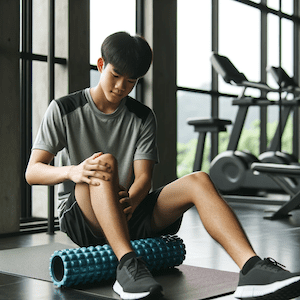

Massage & Muscle Injuries
- Muscle Injury? What are the Benefits of Getting a Massage? - Explore the therapeutic advantages of massage for muscle injuries.
- What Is The Difference Between Remedial & Relaxation Massage? - Learn the distinctions between remedial and relaxation massage techniques.
- How Does Trigger Point Therapy Help? - Understand the role of trigger point therapy in treating muscle injuries.
- How Does Acupressure Help Muscle Injury? - Discover how acupressure can aid in the recovery of muscle injuries.
- What is Sports Massage? - Explore the specifics and benefits of sports massage for athletes and active individuals.
- When is the Best Time to Get a Pre-Event Massage? - Learn the optimal timing for a pre-event massage to enhance performance.
- When is the Best Time for Your Post-Event Massage? - Find out the ideal time to receive a post-event massage for effective recovery.
Conclusion
In conclusion, this FAQ article on managing and recovering from muscle injuries offers a wealth of information, from understanding different types of injuries like muscle strains and tears, to exploring various treatment and recovery options. Whether you're dealing with a recent injury, seeking preventive advice, or exploring therapeutic methods like massage and acupressure, this guide serves as a valuable resource.
Remember, the journey to recovery is unique for each individual, and this guide aims to empower you with knowledge and tools to aid in your healing process. Stay informed, listen to your body, and seek professional advice when needed, as you navigate the path to recovery and optimal muscle health.





































